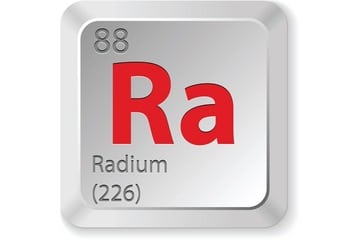Most of us know of Marie Curie’s groundbreaking work with radiation—her discovery of radium and polonium, her two Nobel Prizes, and her contribution of the word radioactivity to our lexicon. But it may come as a surprise to some that her experiments opened the door to a health craze in the early 20th century. Radiation was believed to be good for one’s health—a kind of cure-all that could rejuvenate people and prolong their lives. In fact, Curie posited that radiation could cure cancers, though that’s exactly what killed her at the age of 67. Here are some of the items the American public clamored for:
• Radioactive drinking water, known as “liquid sunshine”
• The Cosmos Bag, which contained cotton and radioactive ore used to treat arthritis and other pains
• Radithor, a tonic often prescribed by doctors
• The Revigator, a crock lined with radioactive ore and used to produce radioactive drinking water at home
• Suppositories
• Bath salts
• Lotions and face creams
• Cigarette holders
• Comforters and “Oradium” wool for babies
• Heating pads
• Refrigerator deodorizers
• Bread
• Chocolate bars
According to Dr. Paul J. Rosch, president of The American Institute of Stress and clinical professor of medicine and psychiatry at New YorkMedicalCollege, many double-blind studies support the belief that radiation has curative powers. However, what we know today—and what eluded the great minds of the previous century—is that the amount of radiation is key to receiving any benefits from the exposure: The dosage must be low-level.
Marie Curie left behind not only a legacy to scientific research, but also some personal effects (including lab books, calculations, and a cookbook) that remain so radioactive a century later that they’re kept in lead-lined boxes or other protective storage.

Recent Comments